I am so pleased with the final result of the TimeLine Mosaic that I worked on again this year with the Sixth Graders at Murphy school.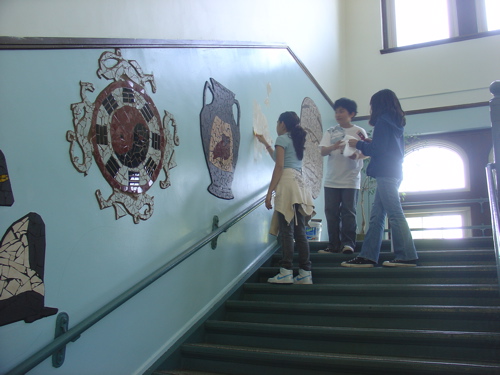
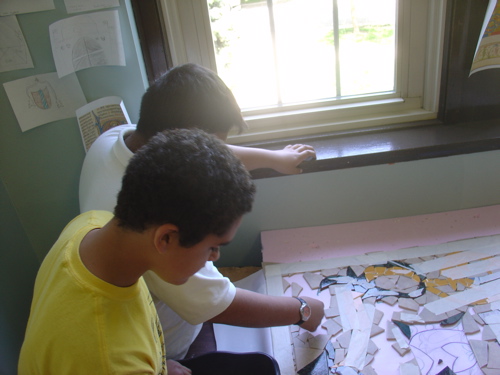

We had started it last year and this year we added 3 more symbols of various Ancient Cultures.
It was really wonderful to attend the Fine Arts Festival at Murphy school and to officially inaugurate the Mosaic Time Line
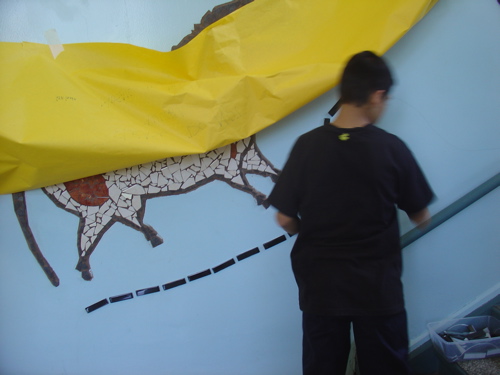
We cut the ribbon
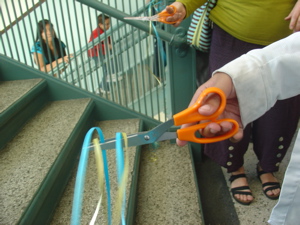
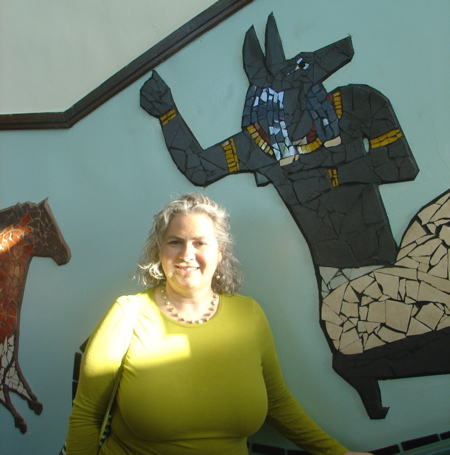
and then everyone viewed the symbols of ancient cultures.
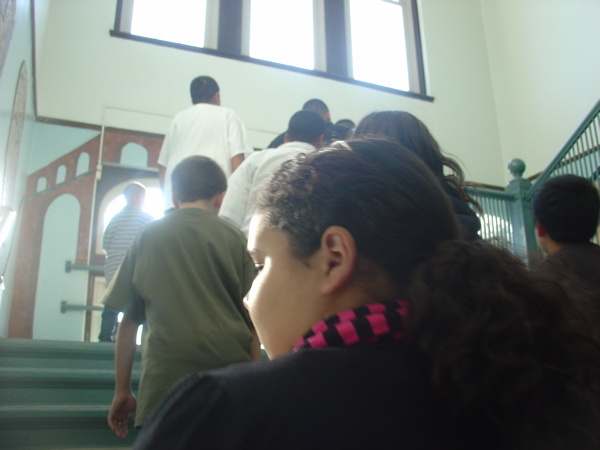
The timeline starts with A Cave painting of a horse from Lascaux, France. 14,000 BCE
Next (my favorite) Anubis, Egyptian God of the Dead. 3000 BCE . I combined the Chinese Bagua, which was discovered in 2,800 BCE by FuXi on the back of a tortoise, with dragons which are a symbol of the emperor. For Ancient Greece, I chose a Greek pot from 600 BCE depicting Athena’s owl, and Murphy’s mascot.
This year we added an Archer from a frieze on the wall of Darius the Great’s Palace, Persia, 510 BCE 
I wanted to make sure North America was represented by this
Giant stone head created by the Olmecs in the area near what is now Veracruz, Mexico . The Olmecs came into dominance from 1200 to 400 BC
The arched windows lent themselves beautifully to a depiction of the Rome’s best engineering feat; an Aqueduct from 100 BCE 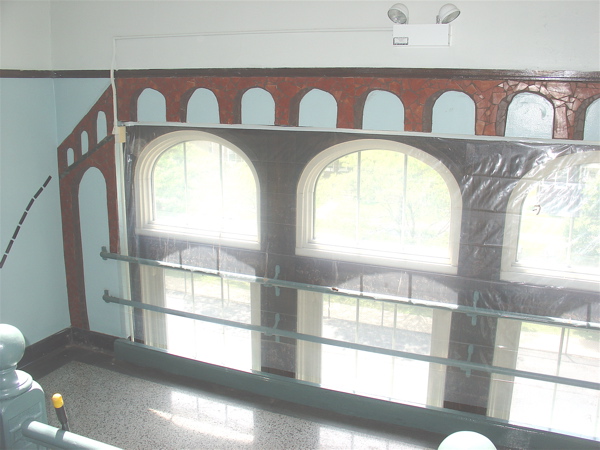
finally it ends on the landing with an Illuminated Manuscript Europe representing the Middle Ages in Europe. Monks hand-copied books; decorating pages and words with plants, animals and scenes from the text.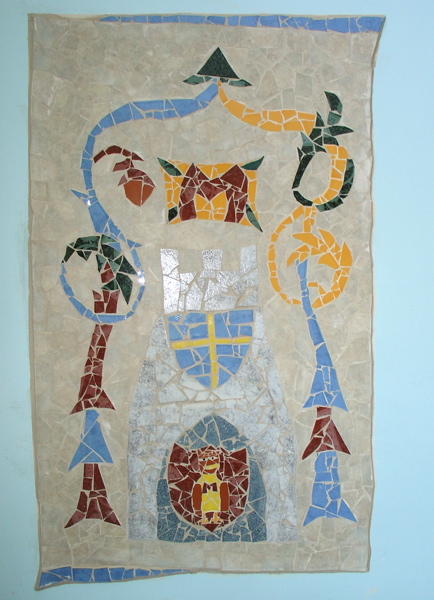
Here are some other photos- some taken before grouting so you can compare and some details of the mosaics
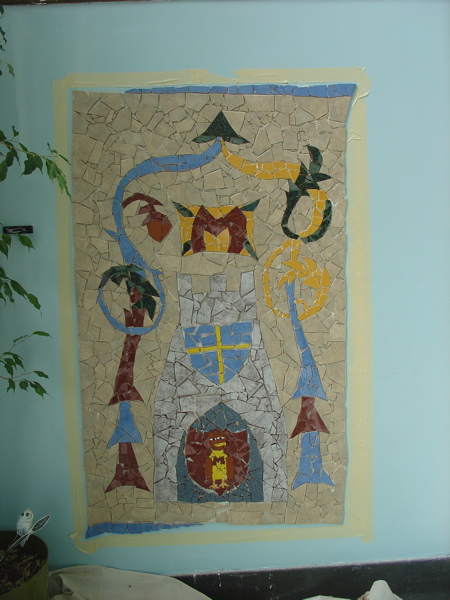

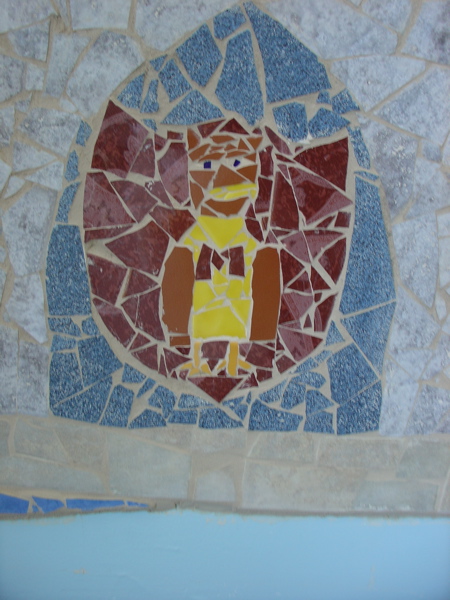
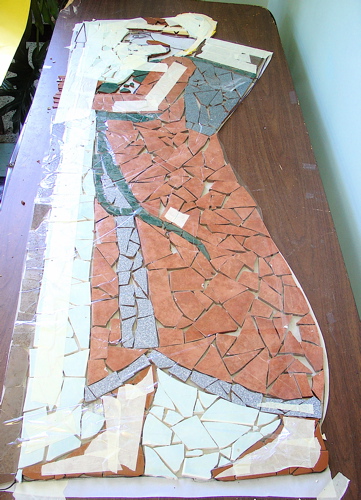


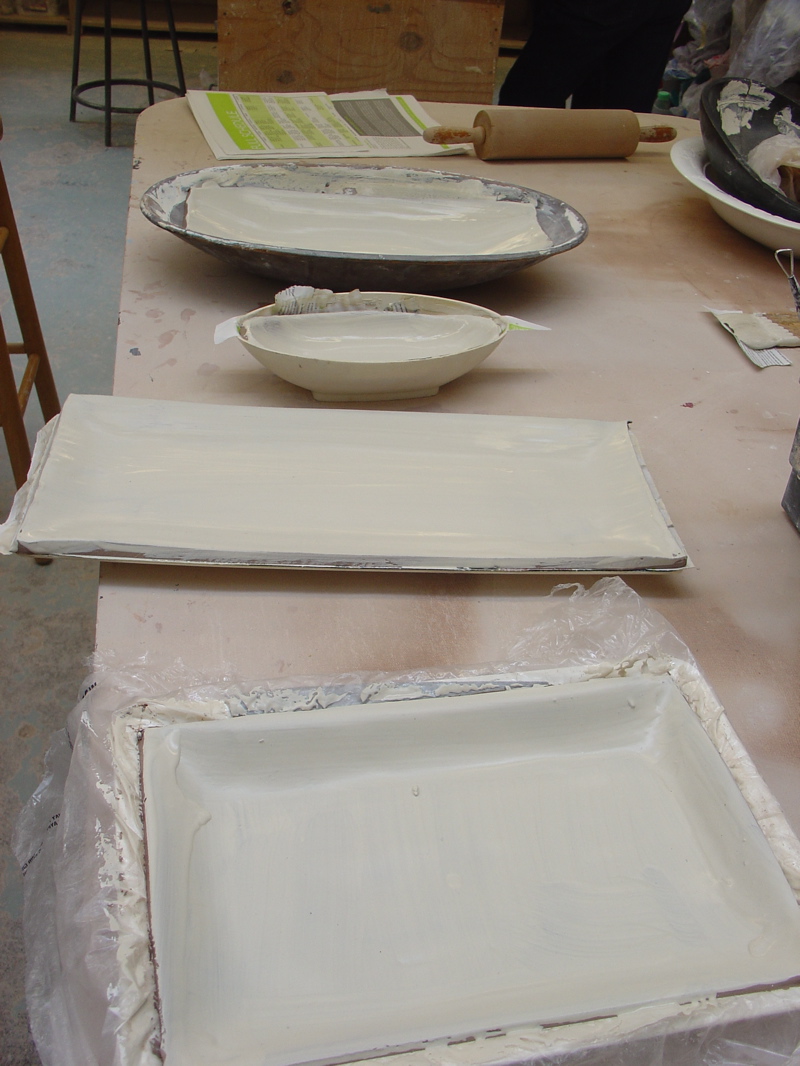
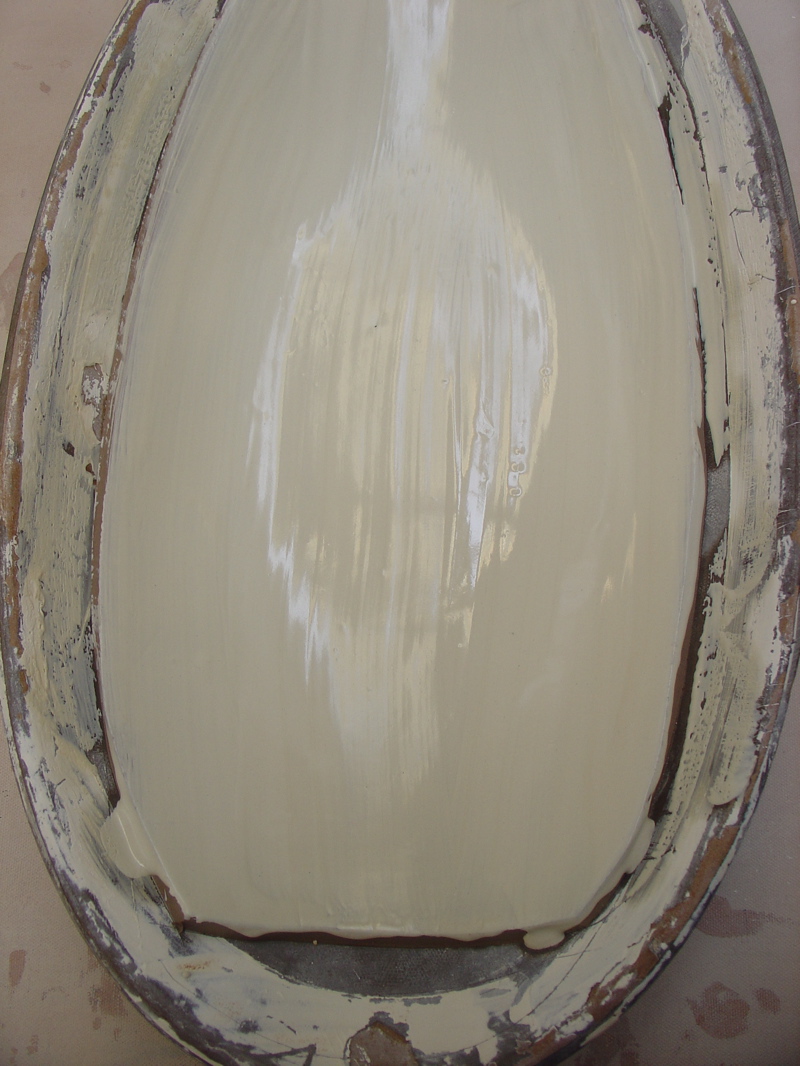
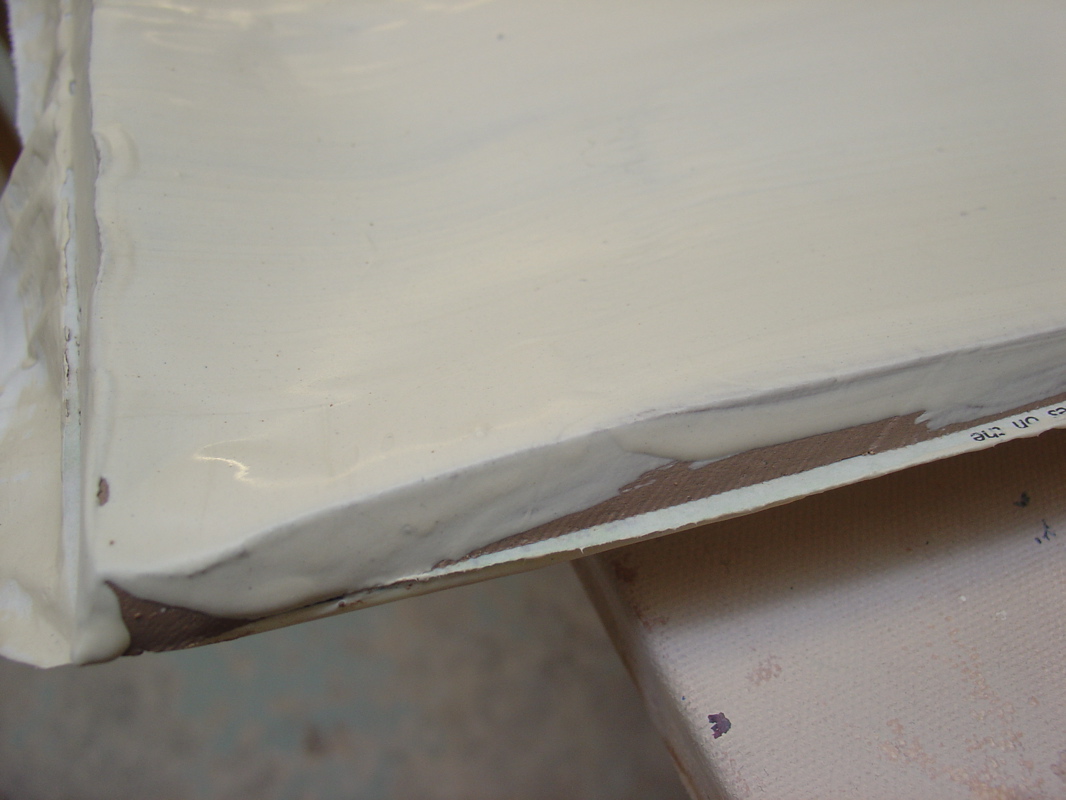
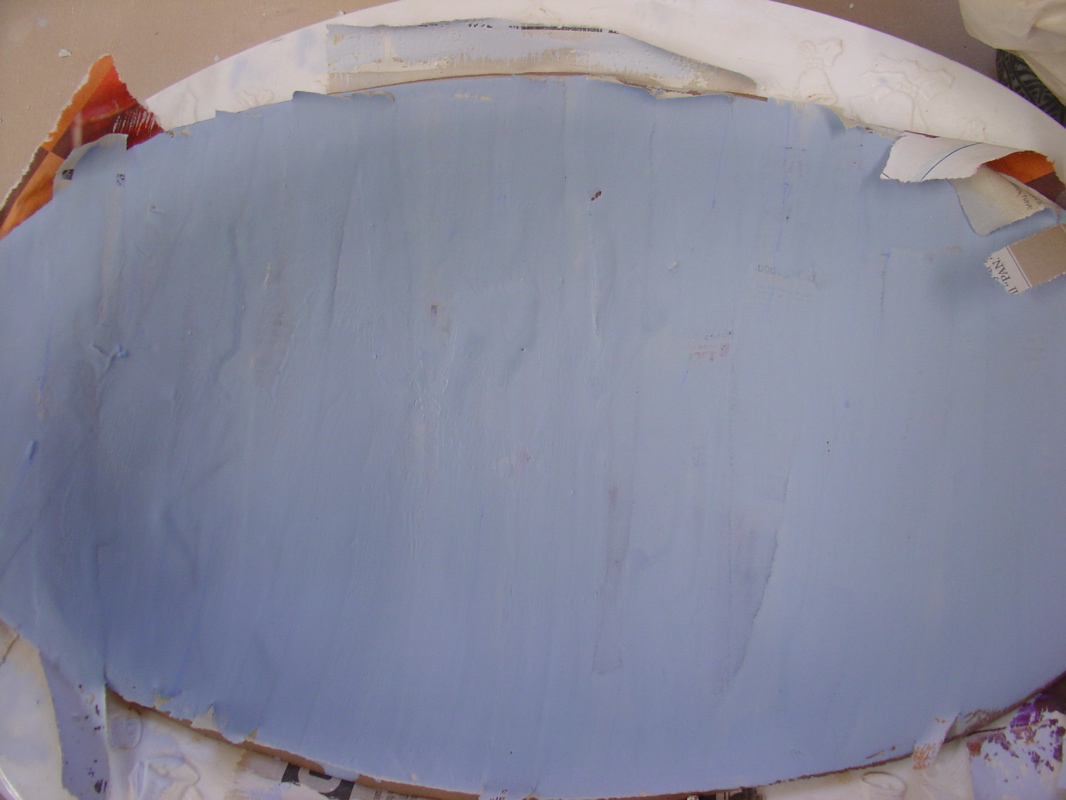
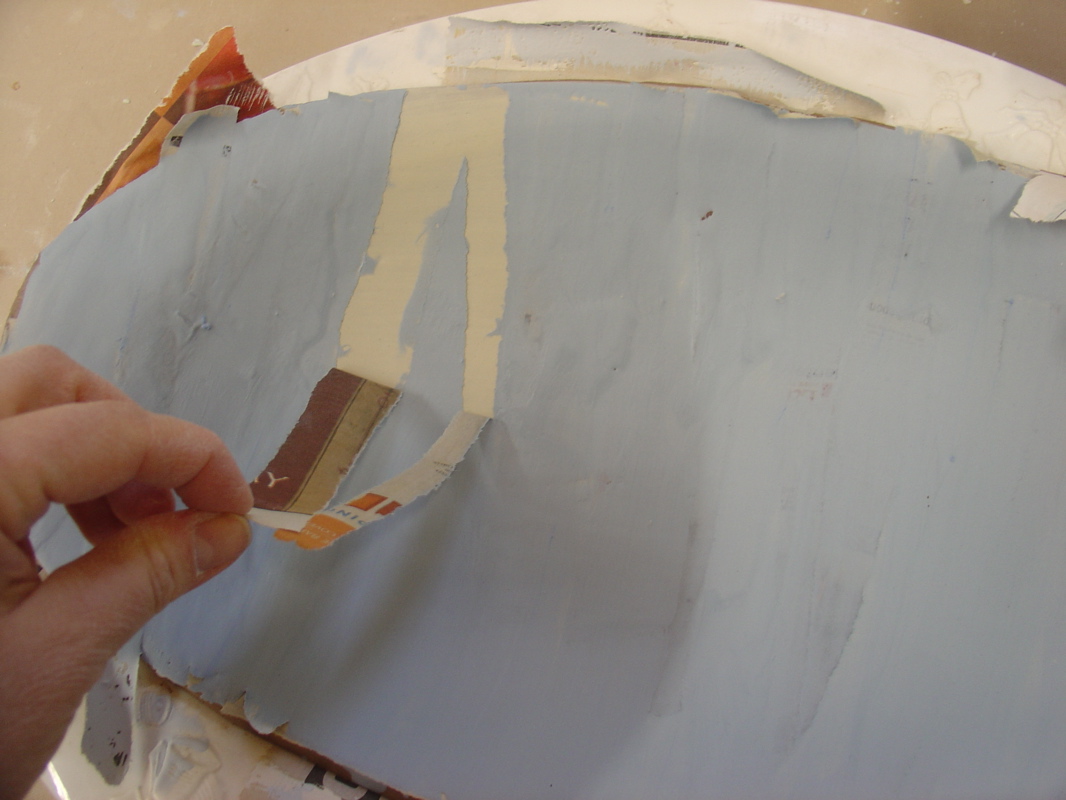


 and on another, some soda ash water for a matte finish with possible orange flashing.
and on another, some soda ash water for a matte finish with possible orange flashing. 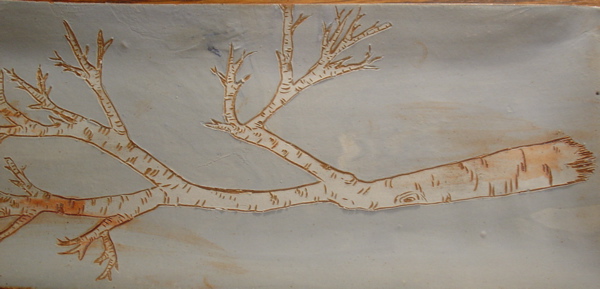 I have tried quite a few finishes on these trays.
I have tried quite a few finishes on these trays.  Under shino and wiped off lightly- matte finish
Under shino and wiped off lightly- matte finish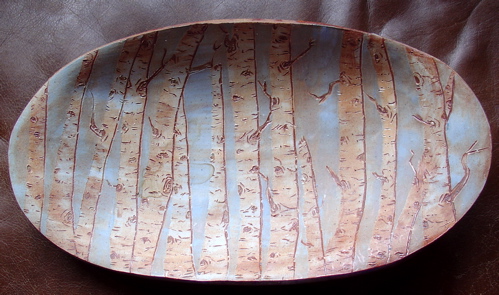 under Rutile Blue and (badly?) wiped off- matte finish
under Rutile Blue and (badly?) wiped off- matte finish
 but of all the finishes (and this is just a little too matte) this is probably what I was shooting for.
but of all the finishes (and this is just a little too matte) this is probably what I was shooting for.